Contents
- 1. User Manual Addendum
- 2. User Manual part 1
- 3. User Manual part 2
User Manual part 2

Rad-87 Pulse CO-Oximeter Operator’s Manual 5-1
5
alarms and messages
g
Alarm identification
The Rad-87 visually and audibly indicates alarm conditions that the system detects.
Audible alarms may be silenced, without affecting the operation of visual alarms.
Three levels of alarm priority are implemented: high, medium and low priority. The following table
outlines the alarm priority specifications.
PARAMETER/MEASUREMENT — ALARM
SETTING RANGE
High
Low arterial oxygen saturation
Audible and visual
High carboxyhemoglobin saturation
High methemoglobin saturation
Low total hemoglobin concentration
High total hemoglobin concentration
High pulse rate
Low pulse rate
Sensor off and no sensor
Defective Sensor
Defective Patient Cable
System failures
Medium
High saturation
Low PI
High PI
Low PVI
High PVI
Low battery, monitoring patient
Low
Low carboxyhemoglobin saturation
Low methemoglobin saturation
Low battery, not monitoring patient
NOTE: There are no alarms associated with SpOC.

5-2 Rad-87 Pulse CO-Oximeter Operator’s Manual
5alarms and messages
Alarm indication
An alarm condition caused by an out-of-limit parameter/measurement is indicated by:
■ Audible alarm tone
■ Flashing Out-of-limit parameter/measurement label and value
■ System Status Light flashes red for high priority alarms, flashes yellow for medium priority
alarms or shows solid yellow for low priority alarms
■ Red flashing Alarm Bell for high priority alarms
Alarm limits
CAUTION: TO ENSURE THAT ALARM LIMITS ARE APPROPRIATE FOR THE PATIENT BEING
MONITORED, CHECK THE LIMITS EACH TIME THE RAD-87 IS USED.
When an alarm limit is exceeded, an audible alarm activates and the Alarm Bell flashes red for high
priority alarms and the System Status Light is solid yellow for low priority alarms, flashes yellow for
medium priority alarms or flashes red for high priority alarms. When a sensor is not connected to a
patient, “SEN OFF” message will show on the display. When a sensor is not connected to its cable,
“NO SEN” message will show on the display.
NOTE: An audible alarm will accompany the visual indicators unless the Rad-87 has been set to
Interface Alarms "Off" (only SpO2 and BPM alarms muted) or to Sleep Mode (all alarms
muted).
ALARM LIMIT: USER CONFIGURABLE SETTINGS
SETTING RANGE
SpO2 High Limit
The SpO2 high alarm limit can be set anywhere between 2% and 99%, then "---"
(Off), with a 1% step size. In the “----” (Off) setting, the SpO2 High Limit alarm is
disabled.
SpO2 Low Limit*The SpO2 low alarm limit can be set anywhere between 1% and 98%, with a 1%
step size.
SpCO High Limit The SpCO high alarm limit can be set anywhere between 2% and 98%, then "---"
(Off), with a 1% step size.
SpCO Low Limit*
The SpCO low alarm limit can be set anywhere between "---" (Off), then 1% and
97%, with a 1% step size. In the “----” (Off) setting, the SpCO Low Limit alarm is
disabled.
SpMet High Limit
The SpMet high alarm limit can be set anywhere between 1% and 99.5%, then "---"
(Off). Adjust in increments of 0.1% for values between 0.1% to 2%. Adjust in incre-
ments of 0.5% for values between 2% and 99.5%.
SpMet Low Limit*
The SpMet low alarm limit can be set anywhere between "---" (Off), then 0.1%
and 99%. Adjust in increments of 0.1% for values between 0.1% to 2%. Adjust in
increments of 0.5% for values between 2% and 99.5%. When SpMet is placed in
the “----” (Off) setting, the SpMet Low Limit alarm is disabled.
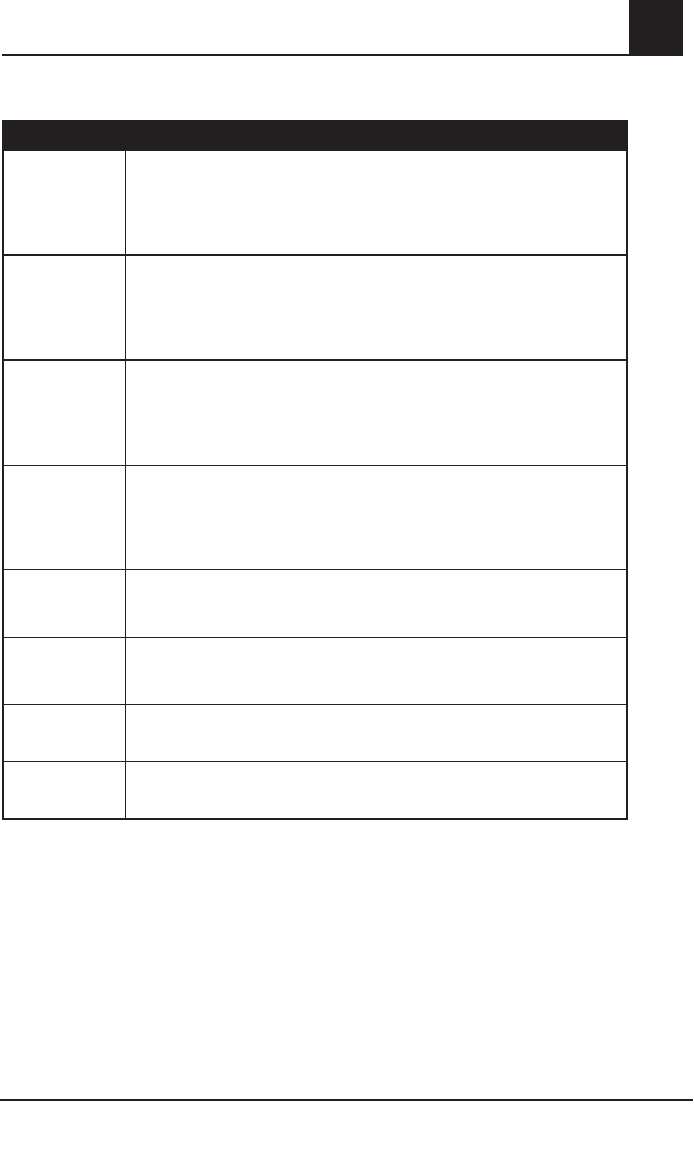
Rad-87 Pulse CO-Oximeter Operator’s Manual 5-3
5
alarms and messages
ALARM LIMIT: USER CONFIGURABLE SETTINGS (CONTINUED)
SETTING RANGE
SpHb High Limit
The SpHb high alarm limit can be set anywhere between 2 g/dl and 24.5 g/dl,
then “----” (Off). Adjust in increments of 0.1 g/dl step size between 2 g/dl and 20
g/dl and 0.5 g/dl step size between 20 g/dl and 24.5 g/dl. When SpHb is placed in
the “----” (Off) setting, the SpHb High Limit alarm is disabled.
SpHb Low Limit*
The SpHb low alarm limit can be set to "---" (Off), then anywhere between 1 g/dl
and 24 g/dl. Adjust in increments of 0.1 g/dl step size between 0.1 g/dl and 20 g/
dl and 0.5 g/dl step size between 20 g/dl and 24 g/dl. When SpHb is placed in the
“----” (Off) setting, the SpHb Low Limit alarm is disabled.
PI High Limit
The PI high alarm limit can be set anywhere between 0.04 % and 19%, then “----”
(Off). Adjust in increments of 0.01% step size between 0.02% and 0.1%, 0.1%
step size between 0.1% and 1% and 1% step size between 1% and 19%. When
PI is placed in the “----” (Off) setting, the PI High Limit alarm is disabled.
PI Low Limit*
The PI low alarm limit can be set anywhere between "---" (Off), then 0.03% and
18%. Adjust in increments of 0.01% step size between 0.03% and 0.1%, 0.1%
step size between 0.1% and 1% and a 1% step size between 1% and 18%. When
PI is placed in the “----” (Off) setting, the PI Low Limit alarm is disabled.
PVI High Limit
The PVI high alarm limit can be set anywhere between 2% and 99%, then “----”
(Off). Adjust in increments of 1% step size. When PVI is placed in the “----” (Off)
setting, the PVI High Limit alarm is disabled.
PVI Low Limit*
The PVI low alarm limit can be set anywhere between "---" (Off), then 1 and 98%.
Adjust in increments of 1 step size. When PVI is placed in the “----” (Off) setting,
the PVI Low Limit alarm is disabled.
Pulse Rate High
Limit (BPM)
The pulse rate high alarm limit can be set anywhere between
35 BPM and 235 BPM, with a 5 BPM step size.
Pulse Rate Low
Limit (BPM)*
The pulse rate low alarm limit can be set anywhere between
30 BPM and 230 BPM, with a 5 BPM step size.
* The low alarm limit must always be set below the high alarm setting. Attempting to set the high alarm
limit below the low alarm limit, the low alarm limit will automatically adjust the low limit to the next setting
below the newly entered high alarm limit setting.
NOTE: Pressing and holding down the up and down buttons allow for the rapid scrolling of changing alarm
limits.
NOTE: If there is a loss of power for any length of time, the Alarm settings will be set back to the User set
defaults. If the user has not utilized this option, then all parameters/measurements will be set back to the
factory defaults.
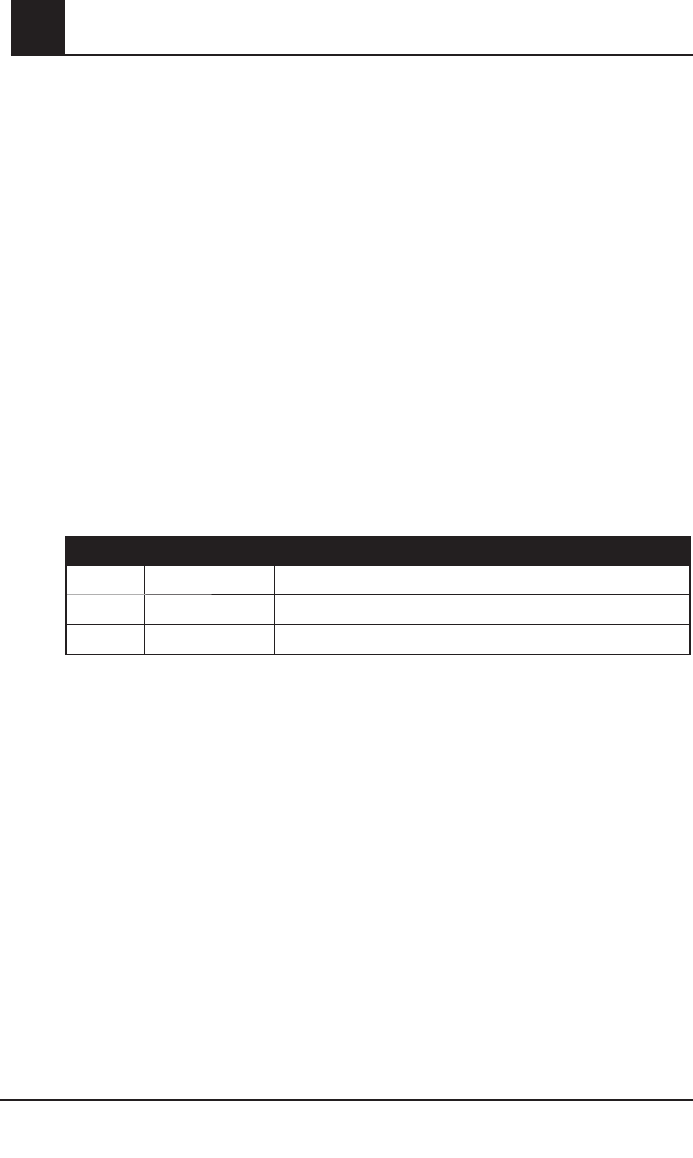
5-4 Rad-87 Pulse CO-Oximeter Operator’s Manual
5alarms and messages
SINGLE ALARM
When an alarm is activated, the display shows the screen containing the parameter/measurement
in alarm status. The number value and the label (name) for the parameter/measurement in alarm
status flash, an audible alarm activates, the Alarm Bell flashes red for high priority alarms and the
System Status Light is solid yellow for low priority alarms, flashes yellow for medium priority alarms
or flashes red for high priority alarms.
MULTIPLE PARAMETER/MEASUREMENT ALARMS
When multiple parameters/measurements alarm, the screen with the highest alarm priority (and
with an parameter/measurement in alarm status) will show on the display. Refer to the table
Alarm Priority for Display Screens located below. The number value and the label (name) for the
parameter/measurement in alarm status flash, an audible alarm activates, the Alarm Bell flashes red
for high priority alarms and the System Status Light is solid yellow for low priority alarms, flashing
yellow for medium priority alarms and flashing red for high priority alarms. Additional parameters/
measurements in alarm status (competing alarms) that are not contained on the active screen will
show as flashing parameter/measurement labels (names). The parameters/measurements with
competing alarms can be viewed by pressing the Display Button to scroll through the screens.
When an alarm is resolved, the parameter/measurement label stops flashing. When all parameters/
measurements in alarm status on a display screen are resolved, the screen changes to show the
next priority screen with active alarms.
ALARM PRIORITY FOR DISPLAY SCREENS
PRIORITY DISPLAY SCREEN PARAMETERS/MEASUREMENTS SHOWN
1 Screen 1 %SpO2, BPM, SpHb g/dl
2 Screen 2 PI, %SpCO ml/dl, PVI
3 Screen 3 %SpMet, %SpCO
The display screens are assigned alarm priority according to the table above. Screen 1 has
first priority and displays if it contains a parameter/measurement in alarm status with other
competing parameter/measurement alarms. When Screen 2 contains the competing parameter/
measurement alarms, Screen 2 will take priority and show on the display. Screen 3 has the lowest
priority.

Rad-87 Pulse CO-Oximeter Operator’s Manual 5-5
5
alarms and messages
ALARM SILENCE
Audible alarms may be silenced, while visual alarms remain active. The alarm silence function is
controlled by pressing the Alarm Silence Button.
The Alarm Bell and the System Status Light provide visual feedback when the Rad-87 audible
alarms are silenced.
Alarm Silence function when monitoring a patient:
Power-On – Alarms active, Alarm Bell flashes red for high priority alarms and the System Status
Light is solid yellow for low priority alarms, flashes yellow for medium priority alarms or
flashes red for high priority alarms.
Press Once – Alarm suspended for 120 seconds, audible alarms are silenced.
– The Alarm Bell flashes red for high priority alarms and the System Status Light flashes
yellow for all alarms.
Press Twice – Return to audible alarms active, audible alarms return.
Repeated pressing of the Alarm Silence Button will cycle though alarm silence options above.
Alarm Silence function when not monitoring a patient:
Power-On – Alarms active, Alarm Bell is not flashing and the System Status Light is solid yellow.
Press Once – Device is silenced until it is cycled off/on or until monitoring begins.
– The Alarm Bell is not flashing and the System Status Light is solid yellow for low
priority alarms.
ALARM BELL
The Alarm Bell flashes red for high priority alarms. Pressing the Alarm Silence Button once silences
the audible alarm for 120 seconds (default) while the Alarm Bell flashes to indicate an alarm
condition. If the high priority alarm condition is resolved during the Alarm silence interval, the Alarm
Bell stops flashing. If the high priority alarm condition remains (Alarm Bell flashing red), pressing the
Alarm Silence button again activates the audible alarms and the Alarm Bell continues to flash red.
The Alarm Bell stops flashing when the high priority alarm conditions are resolved.

5-6 Rad-87 Pulse CO-Oximeter Operator’s Manual
5alarms and messages
SYSTEM STATUS LIGHT
While monitoring a patient and an alarm condition occurs, an audible alarm activates and the
System Status Light shows solid yellow for low priority alarms, flashes yellow for medium priority
alarms or flashes red for high priority alarms. Pressing the Alarm Silence Button (one time) silences
the alarm tone for 120 seconds (default). Pressing the Alarm Silence Button a second time activates
the audible alarms and the System Status Light shows solid yellow for low priority alarms, flashes
yellow for medium priority alarms or flashes red for high priority alarms. When all alarm conditions
are resolved, the System Status Light changes to solid green.
When monitoring a patient and there are no alarm conditions, the System Status light shows
green. Pressing the Alarm Silence Button (one time) silences the alarm tone for 120 seconds and
the System Status Light flashes yellow if there is not alarm condition. Pressing the Alarm Silence
Button a second time returns the device to normal monitoring status and the System Status Light
illuminates green when patient monitoring begins.
While not monitoring a patient, the System Status Light illuminates solid yellow. If an alarm condition
occurs the System Status Light shows solid yellow for low priority alarms. Pressing the Alarm
Silence Button will permanently silence the alarm tone and the System Status Light is solid yellow
until the power is cycled or patient monitoring begins.
Should the alarm condition be created by a low battery condition, plug the device into AC power
immediately.
ALARM MUTE
When the Rad-87 is set to Interface Alarms "Off" (muting the SpO2 and BPM audible alarms at the
device) and SpO2 or BPM alarms occur, the Alarm Bell flashes red and the System Status Light is
solid yellow for low priority alarms, flashes yellow for medium priority alarms or flashes red for high
priority alarms. The audible alarm (SpO2, BPM) activates at the interfaced system while the audible
alarm is muted at the device. Once the SpO2 or BPM alarm condition is resolved and there are no
other system or parameter/measurement alarms, the Alarm Bell stops flashing, the System Status
Light changes to solid green and the audible alarm at the interfaced system deactivates.
NOTE: The Rad-87 reverts to Interface Alarms "On" during power interruptions or when the
interface connection is lost. This ensures that the Rad-87 provides SpO2 and BPM
audible alarms when connection to the interfaced system becomes compromised.
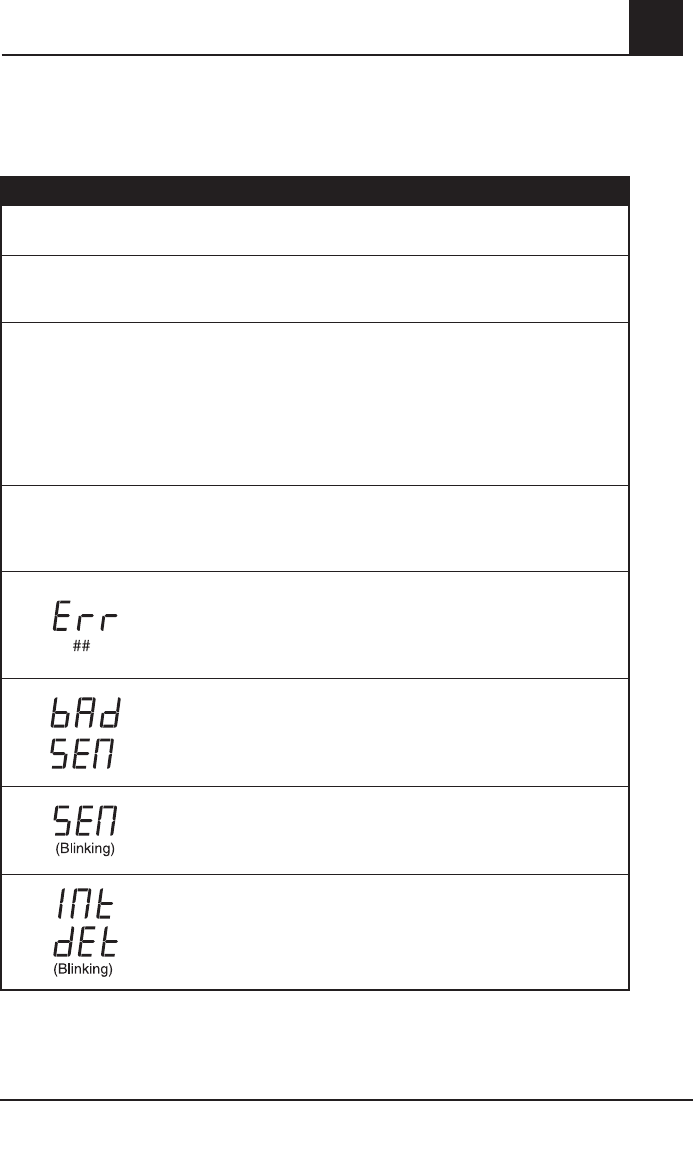
Rad-87 Pulse CO-Oximeter Operator’s Manual 5-7
5
alarms and messages
MESSAGES
The Rad-87 Pulse CO-Oximeter will indicate other data or system errors.
Message conditions for the Rad-87 follow:
DISPLAY TYPE SOLUTION
SCROLLING ZEROS Pulse Search Wait for found pulse. (This Search should occur
whenever a sensor is first applied to a patient).
PULSE BAR (SIQ)
TURNS RED Low Signal IQ
1. Rule out occlusion of blood flow.
2. Verify placement of sensor.
PERFUSION BAR (PI)
TURNS RED Low Perfusion
1. Rule out occlusion of blood flow.
2. Attempt to warm patient.
3. Move sensor to better perfused site.
NOTE: Masimo recommends using an adhesive
sensor whenever low perfusion is expected or
evident.
PARAMETER/
MEASUREMENT
LABEL AND
NUMBER FLASH
Alarm Limit Exceeded
Assess /address patient condition.
Re-set alarm limits if indicated.
System Fault
Return for service.
There are several error codes, all error codes
require return of the device to an authorized
service center for repair. See Section 9, Service
and Repair.
Defective Sensor Replace sensor.
Unrecognized Sensor Connect appropriate sensor.
Interference Detected
Ensure that the sensor is properly applied, and
cover the sensor site with opaque material, if
required.
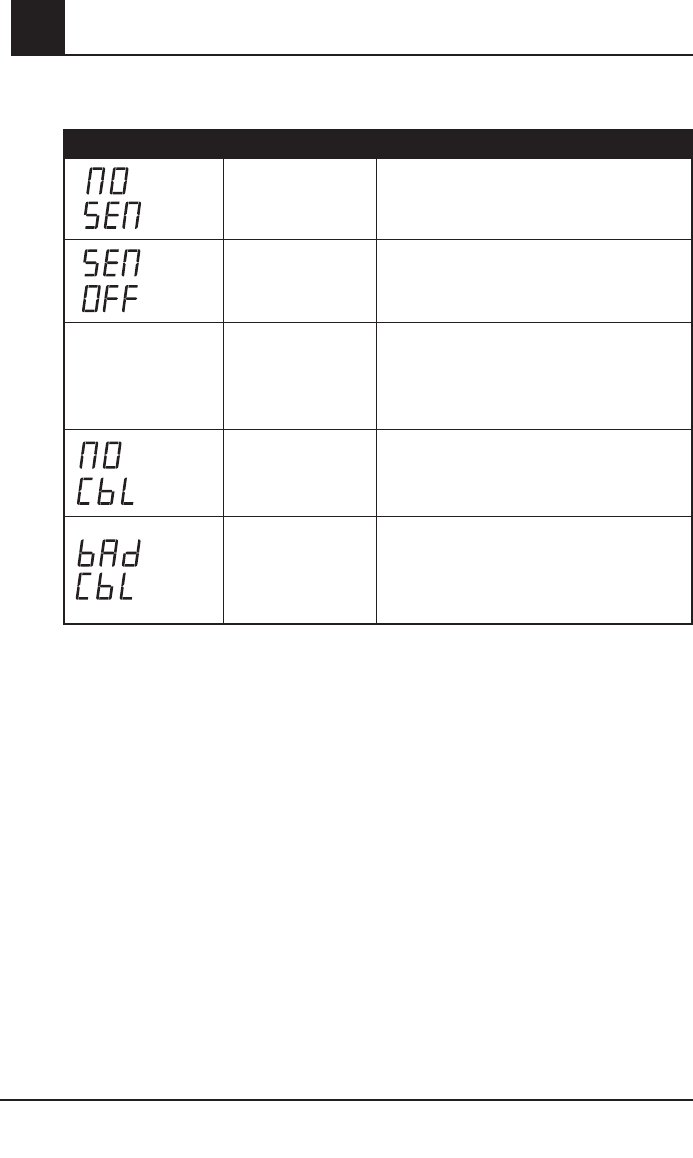
5-8 Rad-87 Pulse CO-Oximeter Operator’s Manual
5
Messages continued
DISPLAY TYPE SOLUTION
No Sensor Connected Connect sensor to cable.
Sensor off patient
1. Reattach sensor to patient.
2. Verify proper sensor placement.
SINGLE BATTERY
LEVEL INDICATOR
FLASHES (WITH
AUDIBLE ALARM)
Battery level too low Connect device to AC Power to charge the
battery.
No Cable Connected Connect appropriate cable to unit.
Defective cable Replace cable
alarms and messages

Rad-87 Pulse CO-Oximeter Operator’s Manual 6-1
6
troubleshooting
g
Troubleshooting
The following chart describes what to do if the Rad-87 system does not operate properly or
fails.
PROBLEM TYPE SOLUTION
DEVICE DOES NOT
POWER ON
Low battery/ not plugged
into AC power supply
Connect the AC Power Cord to the Rad-87 and
to an AC outlet. Make sure that the AC Power
Indicator light is on.
BATTERY RUN-TIME
IS SIGNIFICANTLY
REDUCED
Low battery Contact Technical Services or your local Masimo
representative.
CONTINUOUS
SPEAKER TONE Internal Failure
Device requires service. Press the Alarm
Silence Button. If alarm continues to sound,
power down device. If the power button does not
turn the device off, press and hold the Power
Button for 5 seconds. Return the device for
service.
NO SPEAKER TONE Pulse tone set to “mute” Press Up Arrow or Alarm Volume Adjust.
NO ALARM TONE Alarm Silence Enabled The System Status Light flashes yellow. See
Section 4, Alarm Silence.
BUTTONS FAIL
TO WORK WHEN
PRESSED
Internal Failure
Use auxilary power down method by pressing
and holding Sensitivity and Display Buttons
simultaneously. Return for service.
SENSOR OFF
MESSAGE
Sensor not connected to
patient properly.
Sensor is damaged.
Properly reapply the sensor on the patient and
reconnect the sensor to the unit or patient cable.
If the sensor is damaged, replace the sensor.
NO SENSOR
MESSAGE
Sensor is disconnected
from patient cable.
Sensor connected upside
down into patient cable.
Check to see if the sensor LED is flashing.
Disconnect and reconnect the sensor. If the LED
fails to operate, replace the sensor.
LOW PERFUSION
(PI BAR TURNS RED)
Improper sensor type.
Poorly perfused site.
Sensor is too tight.
A disorder such as hypo-
thermia, vasoconstriction,
hypovolemia, peripheral
vascular disease or anemia.
Sensor is damaged.
Verify proper sensor and sensor size for the
patient.
Check and see if blood flow to the site is
restricted. Be sure that the sensor is not on too
tight.
Set unit to MAX sensitivity.
Warm the patient or sensor site.
Move sensor to better perfused site.
LOW SIGNAL
QUALITY
Improper sensor type or
application.
Excessive motion relative
to perfusion.
Sensor or cable is dam-
aged or not functioning.
Check and see if blood flow to the site is
restricted.
Check the placement of the sensor.
Re-apply sensor or move to a different site.
Replace sensor or cable.

6-2 Rad-87 Pulse CO-Oximeter Operator’s Manual
6
Troubleshooting continued
PROBLEM POSSIBLE CAUSE(S) RECOMMENDATION
SpO2 VALUES DO NOT
CORRELATE WITH
CLINICAL ASSESSMENT
OR ABGs.
Low perfusion or sensor
displacement.
Check for error messages. See section 5
Messages for recommended corrections.
Check placement of sensor or if it is too tight.
Reapply sensor or select a new site.
Set to MAX sensitivity and confirm that the sensor
is securely on the patient.
Refer to sensor Directions For Use.
PULSE SEARCH
MESSAGE
Device is searching for
pulse.
If device fails to display within 30 seconds,
disconnect and reconnect sensor to patient. If
pulse search continues, move sensor to better
perfused site.
UNEXPECTED SpO2,
SpCO, SpMet or SpHb
READING
Low SIQ or Perfusion Index
(PI) values.
Reposition sensor to site with strong SIQ and PI.
Submit blood sample for laboratory CO-Oximetry
test for comparison.
Inappropriate sensor size or
sensor measurement location.
Verify proper sensor for patient size. Verify
proper sensor site.
UNEXPECTED HIGH SpCO
READING
Possible elevated methe-
moglobin level*.
Submit blood sample for laboratory
CO-Oximetry test.
DIFFICULTY OR NO
SpO2/SpCO/SpMet/SpHb
READING
Low battery/ not plugged
into AC power supply.
Connect the AC Power Cord to the Rad-87 and
to an AC outlet. Make sure that the AC Power
Indicator light is on.
Interference from line-fre-
quency induced noise.
Verify/set 50/60hz menu setting. See section 3,
Rad-87 Power Requirements.
Inappropriate sensor or
sensor size.
Verify proper sensor and sensor size for the
patient.
Excessive ambient or
strobing light.
Shield the sensor from excessive or strobing
light.
Also, see Section 4, Successful Monitoring for additional information.
DIFFICULTY OR NO SpCO/
SpMet/SpHb READING
Excessive motion. Minimize or eliminate motion at the monitoring
site.
Inappropriate sensor or
sensor size.
Verify use of an SpCO/SpMet/SpHb capable
sensor. Verify proper sensor size for the
patient.
Excessive ambient or
strobing light.
Shield the sensor from excessive or strobing
light.
PRINT FUNCTION DOES
NOT WORK Wrong serial cable is used. Make sure a null modem cable is used.
WIRELESS RADIO
NO CONNECTION
Radio Off. Confirm the Wireless Radio is ON.
Network settings are not
configured correctly. Confirm wireless network settings.
No/inadequate wireless
coverage. Confirm wireless coverage.
troubleshooting

Rad-87 Pulse CO-Oximeter Operator’s Manual 7-1
7
specifications
p
Rad-87 specifications
PERFORMANCE
Measurement Range
SpO2: 0 -100%
SpMet: 0 - 99.9%
SpCO: 0 - 99%
SpHb 0 - 25 g/dl
SpOC 0 - 35 ml of O2/dl of blood
Pulse Rate: 25 - 240 (bpm)
Perfusion Index: 0.02% - 20%
Pleth Variability Index: 0 - 100%
Accuracy:
Arterial Oxygen Saturation Accuracy1
Saturation 60% to 80%
No Motion
Adults, Infants, Pediatrics ±3%
Saturation 70% to 100%
No Motion2
Adults, Infants, Pediatrics ± 2%
Neonates* ± 3%
Motion3
Adults, Infants, Pediatrics, Neonates ± 3%
Low Perfusion4
Adults, Infants, Pediatrics, Neonates ± 2%
Pulse Rate Accuracy5
Pulse Rate: 25 - 240 (bpm)
No Motion
Adults, Infants, Pediatrics, Neonates ± 3 bpm
Motion4
Adults, Infants, Pediatrics, Neonates ± 5 bpm
Low Perfusion
Adults, Infants, Pediatrics, Neonates ± 3 bpm
Carboxyhemoglobin saturation accuracy (%SpCO)1
Adults, Infants, Pediatrics 1% - 40% ± 3%
Methemoglobin saturation accuracy (%SpMet)1
Adults, Infants, Pediatrics, Neonates 1% - 15% ± 1%
Total Hemoglobin accuracy (SpHb g/dl)9
Adults, Pediatrics 8 - 17 g/dl ±1 g/dl
Resolution
Arterial Oxygen Saturation (%SpO2)1%
Carboxyhemoglobin Saturation (%SpCO) 1%
Methemoglobin Saturation (%SpMet) 0 .1%
Total Hemoglobin (SpHb g/dl) 0 .1 g/dl
Pulse Rate (bpm) 1 bpm
* Only Rainbow sensors provide ± 2% for Neonates

7-2 Rad-87 Pulse CO-Oximeter Operator’s Manual
7
ELECTRICAL
AC Power requirements: 100 - 240 VAC, 47-83 Hz
Power consumption: 15 VA max.
Batteries
Type: Sealed lead acid
Capacity (battery life): up to 4 hours6
Charging time: 8 hours
ENVIRONMENTAL
Operating Temperature: 41°F to 104°F (5°C to 40°C)
Transport/Storage Temperature: -40°F to 158°F (-40°C to +70°C)7
Operating Humidity: 5% to 95%, non-condensing
Operating Altitude: 500 mbar to 1060 mbar pressure
-1000 ft to 18,000 ft (-304 m to 5,486 m)
PHYSICAL CHARACTERISTICS
Dimensions: 8.2” x 6.0” x 3.0” (20.8 cm x 15.2cm x 7.6 cm)
Weight: 2.1 lbs. = .908 Kg. = 32 oz
Trending
72 hours of trending at 2 second resolution
Mode
Averaging mode: 2, 4, 8,10, 12, 14 or 16 seconds8
Sensitivity: Normal, Maximum9, and APOD
Alarms
Audible and visual alarms for high low saturation and pulse rate (SpO2 range 1% - 99%, SpCO range 1% - 98%,
SpMet range 1% - 99.5%, SpHb range1 g/dl - 24.5 g/dl, PI range 0.03% - 19%, PVI range 1% - 99%, pulse rate
range 30 - 235 bpm)
Sensor condition, system failure and low battery alarms
High Priority Audible Alarm: 800 Hz tone, 5 pulse burst, pulse spacing: 0.250s,
0.250s, 0.500s, 0.250s, repeat time:10s
Medium Priority Audible Alarm 500 Hz tone, 3 pulse burst, repeat time: 5s
Low Priority Audible Alarm: 500 Hz tone, 3 pulse burst, repeat time: 5s
Alarm Volume: High: 85 dB (min)
Low: 45 dB (min)
High Priority Visual Alarm: Red flashing 2 sec. (0-5 Hz)
Medium Priority Visual Alarm Yellow flashing 4 sec (0.25 Hz)
Low Priority Visual Alarm: Solid yellow
Display/Indicators
Display Language English (default)
Data display: %SpO2, %SpCO, %SpMet, SpHb g/dl, SpOC ml/dl, pulse rate, alarm status, status messages, Signal
IQ, perfusion idex, pleth variability index, sensitivity modes, wireless radio connection, system status
light.
Type: LED
Display update rate: 1 second
specifications

Rad-87 Pulse CO-Oximeter Operator’s Manual 7-3
7
specifications
PHYSICAL CHARACTERISTICS (CONTINUED)
Output Interface
Serial RS-232
Wireless Radio (if installed) 802.11 a/b/g
Nurse Call
Philips VueLink, RadNet, Patient SafetyNet
Compliance
Safety Standard for Medical Equipment EC 60601-1-2nd Edition
UL 60601-1
CAN/CSA C22.2 No. 601-1
JIS 0601-1
Type of Protection Class 1 (AC power), Internally powered (battery power)
Degree of Protection-(Pulse CO-Oximeter Cable): Type BF, Defib Proof Applied-Part
Mode of Operation: Continuous
EMC Standard 60601-1-2
1 SpO2, SpCO and SpMet accuracy was determined by testing on healthy adult volunteers in the range 60% - 100% SpO2, 0% - 40% SpCO and
0% - 15% SpMet against a laboratory CO-Oximeter. SpO2 and SpMet accuracy was determined on 16 neonatal NICU patients ranging in age
from 7 to 135 days old and weighting between 0.5 and 4.25 kgs. Seventy-nine (79) data samples were collected over a range of 70 - 100% SaO2
and 0.5 - 2.5% HbMet with a resultant accuracy of 2.9% SpO2 and 0.9% SpMet. Contact Masimo for testing specifications.
2 The Masimo sensors have been validated for no motion accuracy in human blood studies on healthy adult male and female volunteers with light to
dark skin pigmentation in induced hypoxia studies in the range of 70-100% SpO2 against a laboratory CO-Oximeter and ECG monitor. This variation
equals plus or minus one standard deviation. Plus or minus one standard deviation encompasses 68% of the population.
3 The Masimo sensors have been validated for motion accuracy in human blood studies on healthy adult male and female volunteers with light to
dark skin pigmentation in induced hypoxia studies while performing rubbing and tapping motions, at 2 to 4 Hz at an amplitude of 1 to 2 cm and a
non-repetitive motion between 1 to 5 Hz at an amplitude of 2 to 3 cm in induced hypoxia studies in the range of 70-100% SpO2 against a laboratory
CO-Oximeter and ECG monitor. This variation equals plus or minus one standard deviation. Plus or minus one standard deviation encompasses
68% of the population.
4 The Rad-87 has been validated for low perfusion accuracy in bench-top testing against a Biotek Index 2* simulator and Masimo's simulator with
signal strengths of greater than 0.02% and transmission of greater than 5% for saturations ranging from 70-100%. This variation equals plus or
minus one standard deviation. Plus or minus one standard deviation encompasses 68% of the population.
5 Masimo sensors have been validated for pulse rate accuracy for the range of 25-240 bpm in bench top testing against a Biotek Index 2 simulator.
This variation equals plus or minus one standard deviation which encompasses 68% of the population.
6 This represents approximate run time at the lowest indicator brightness and pulse tone turned off using a fully charged battery without radio
power.
7 If the batteries are to be stored for extended periods of time, it is recommended that they be stored between -20°C to +30°C, and at a relative
humidity less than 85%. If stored for a prolonged period at environmental conditions beyond these limits, overall battery capacity may be diminished,
and lifetime of the batteries may be shortened.
8 With FastSat the averaging time is dependent on the input signal. For the 2 and 4 second settings the averaging time may range from 2-4 and 4-6
seconds, respectively.
9. SpHb accuracy has been validated on healthy adult male and female volunteers and on surgical patients with light to dark skin pigmentation in the
range of 8 g/dL to 17 g/dL SpHb against a laboratory CO-Oximeter. The variation equals plus or minus one standard deviation which encompasses
68% of the population. The SpHb accuracy has not been validated with motion or low perfusion.
*Registered trademark of Fluke Biomedical Corporation, Everett, Washington.
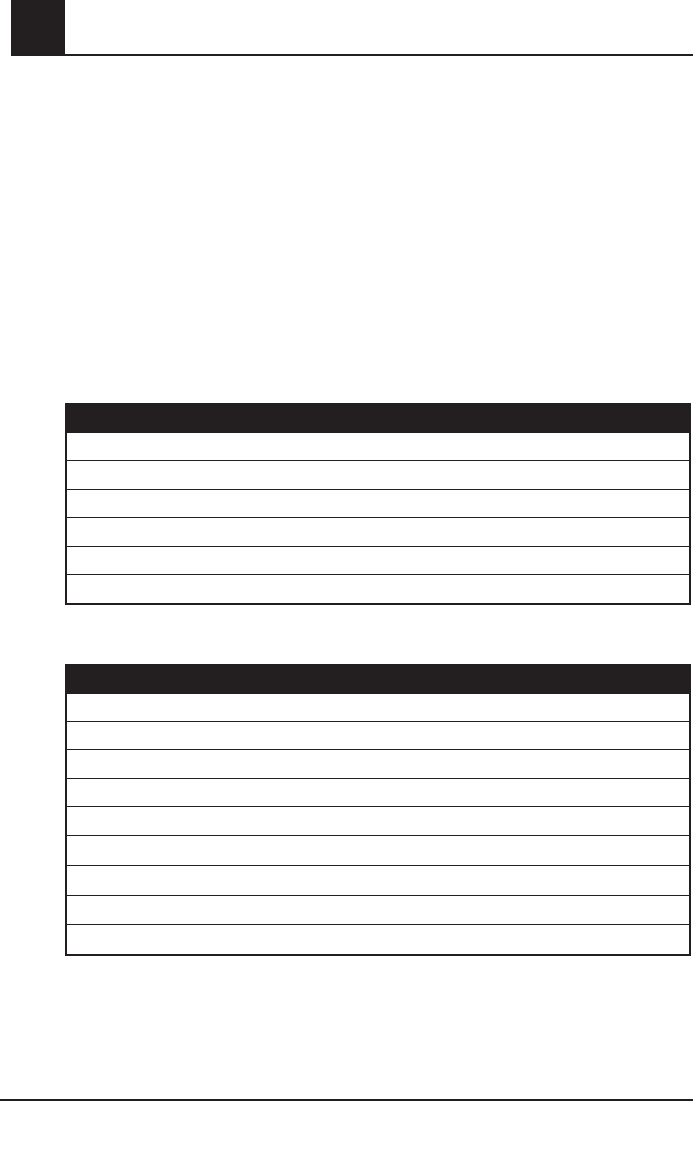
7-4 Rad-87 Pulse CO-Oximeter Operator’s Manual
7
Serial interface specifications
The digital interface for serial communication is based on the standard RS-232 protocol.
The Rad-87 Pulse CO-Oximeter by default always outputs ASCII 1 text data through the serial port,
unless the user selects a different output mode in the Output menu. To interface with the Rad-87
and receive serial text data, simply connect a serial interface cable with a serial output connector
located on the back of the Rad-87.
NOTE: Trend data packets are collected at 2 second intervals. Each data packet contains: the date,
time, SpO2, perfusion index, SpMet, SpCO, SpHb, PI, pulse rate, and alarm and exception values (in
ASCII 2 format).
SERIAL INTERFACE SETUP
To interface with the Rad-87 serial port, set the following communication parameters on the interfacing
serial device:
PARAMETER SETTING
BAUD RATE 9600 Baud bidirectional
NUMBER OF BITS PER CHARACTER 8
PARITY None
BITS 1 start, 1 stop
HANDSHAKING None
CONNECTOR TYPE Female DB-9
The pin-outs for the RS-232 connector are shown in the following table:
PIN SIGNAL NAME
1No Connection
2Receive data – RS-232 ±9 V (±5 Vmin)
3Transmit data – RS-232 ±9 V (±5 Vmin)
4No Connection
5Signal Ground Reference for COM signals
6No Connection
7No Connection
8No Connection
9No Connection
specifications
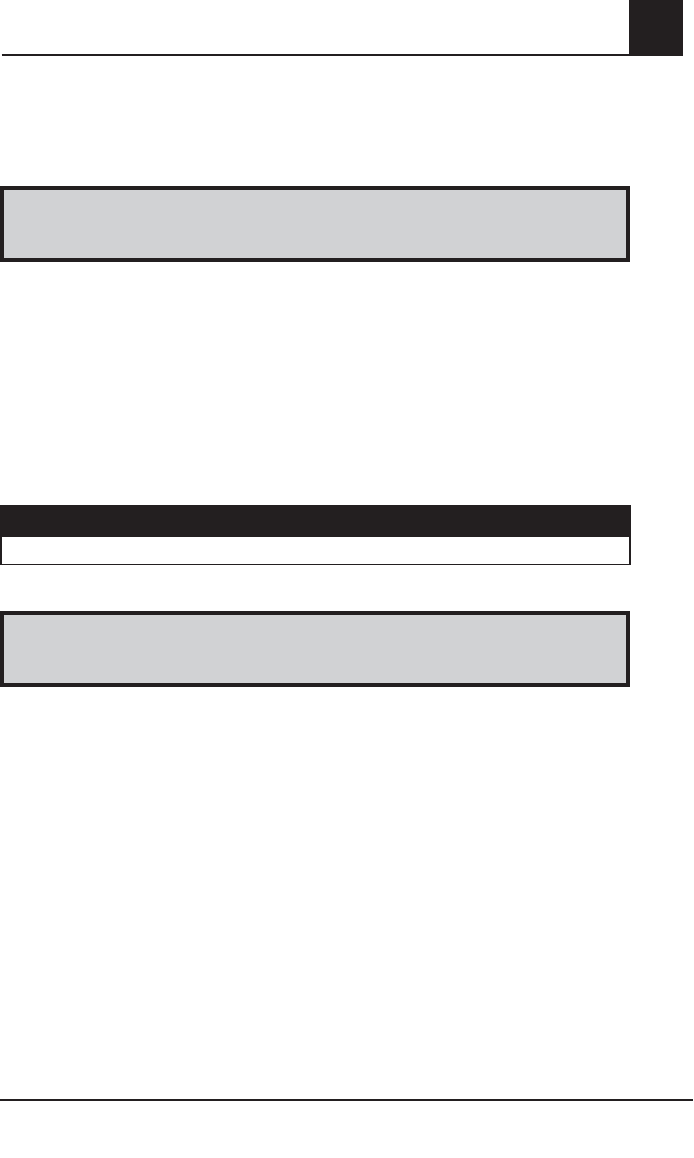
Rad-87 Pulse CO-Oximeter Operator’s Manual 7-5
7
SERIAL PRINTER SETUP
To print the SpO2 and pulse rate data in ASCII 2 format on a serial printer, simply connect the
serial printer to the serial port and set output mode to ASCII 2. Once serial communication is
established, the Rad-87 will automatically start printing the ASCII 2 text data.
WARNING: ALL EXTERNAL DEVICE CONNECTIONS TO THE RS-232 SERIAL PORT
MUST BE IEC-60950 COMPLIANT.
Nurse call specifications
The nurse call features are accessible via the 1/4” round female connector on the back of the
device.
NURSE CALL
The nurse call feature on the Rad-87 Pulse CO-Oximeter is based on the relay closing or opening
depending on alarm, Low Signal IQ events or both. In addition the nurse call polarity can be
inverted to accommodate various nurse call stations requirements.
The nurse call relays have the following electrical specification per switch:
PARAMETER SPECIFICATION
MAX VOLTAGE 36 VDC or 24 VAC peak
WARNING: THE NURSE CALL FEATURE IS DISABLED WHEN THE AUDIBLE ALARMS
ARE SILENCED AND NURSE CALL SETTING IS SET TO “ALARMS”.
specifications


Rad-87 Pulse CO-Oximeter Operator’s Manual 8-1
8
sensors & patient cables
Introduction
This section covers the use and cleaning of Masimo sensors and patient cables.
Before use of any sensor, carefully read the sensor’s Directions for Use.
Use only Masimo sensors and cables with the Rad-87 Pulse CO-Oximeter. Other transducers,
sensors and cables may affect Rad-87's performance.
Tissue damage can be caused by incorrect application or use of a sensor, for example by
wrapping the sensor too tightly. Inspect the sensor site as directed in the sensor Directions for Use
to ensure skin integrity, correct positioning and adhesion of the sensor.
CAUTIONS:
■ DO NOT USE DAMAGED SENSORS OR PATIENT CABLES. DO NOT USE A SENSOR OR
PATIENT CABLE WITH EXPOSED OPTICAL OR ELECTRICAL COMPONENTS.
■ DO NOT IMMERSE THE SENSOR OR PATIENT CABLE IN WATER, SOLVENTS, OR
CLEANING SOLUTIONS (THE SENSORS AND CONNECTORS ARE NOT WATERPROOF).
■ UNLESS OTHERWISE SPECIFIED, DO NOT STERILIZE SENSORS OR PATIENT CABLES
BY IRRADIATION, STEAM, AUTOCLAVE OR ETHYLENE OXIDE. SEE THE CLEANING
INSTRUCTIONS IN THE DIRECTIONS FOR USE FOR REUSABLE MASIMO SENSORS.
■ DO NOT ATTEMPT TO REPROCESS, RECONDITION OR RECYCLE ANY MASIMO
SENSORS OR PATIENT CABLES AS THESE PROCESSES MAY DAMAGE THE ELECTRICAL
COMPONENTS, POTENTIALLY LEADING TO PATIENT HARM.
■ ALL SENSORS AND CABLES ARE DESIGNED FOR USE WITH SPECIFIC MONITORS.
VERIFY THE COMPATIBILITY OF THE MONITOR, CABLE AND SENSOR BEFORE USE,
OTHERWISE PATIENT INJURY CAN RESULT.
SELECTING A MASIMO SET SENSOR
When selecting a sensor, consider the patient’s weight, the adequacy of perfusion, the available
sensor sites, and the duration of monitoring. For more information refer to the following tables
or contact your Sales Representative. Use only Masimo sensors and sensor cables. Select an
appropriate sensor, apply it as directed, and observe all warnings and cautions presented in the
Directions for Use accompanying the sensor. Monitor, cables and sensors must be compatible
to ensure optimal performance. Incompatible components effect operation or data recovery.
High intensity extreme lights (such as pulsating strobe lights) directed on the Pulse CO-Oximeter
sensors, may not allow the sensor to obtain vital sign readings. High ambient light sources such
as surgical lights (especially those with a xenon light source), bilirubin lamps, fluorescent lights,
infrared heating lamps, and direct sunlight can interfere with the performance of the sensor. To
prevent interference from ambient light, ensure that the sensor is properly applied, and cover the
sensor site with opaque material, if required. Failure to take this precaution in high ambient light
conditions may result in inaccurate measurements.
SENSOR APPLICATION INSTRUCTIONS
Unless indicated otherwise in the directions for use, reposition reusable sensors at least every 4
hours and for adhesive sensors inspect the site at least every 8 hours or sooner. If indicated by
circulatory condition or skin integrity, reapply to a different monitoring site.
p
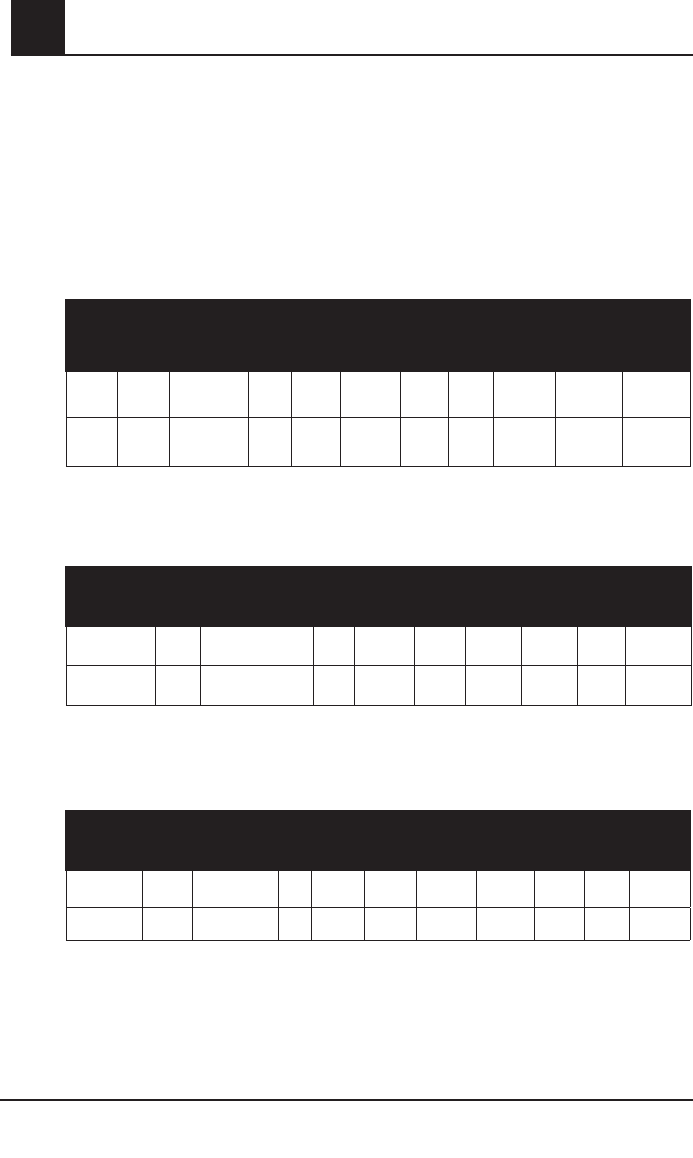
8-2 Rad-87 Pulse CO-Oximeter Operator’s Manual
8sensors & patient cables
Masimo Rainbow Sensors
Masimo Rainbow sensors must be used for the Rad-87 Pulse CO-Oximeter parameters to enable
measurement of Carboxyhemoglobin (SpCO), Methemoglobin (SpMet) and Total Hemoglobin (SpHb).
Rainbow sensors will only measure SpO2 and pulse rate on devices without Masimo Rainbow SET
Technology.
RAINBOW REUSABLE SENSORS
SpO2, SpCO, SpMet, SpHb and pulse rate accuracy for the Rainbow sensors is specified in the
following table.
Rainbow reusable sensors must be used in conjunction with Rainbow RC cables.
SENSOR Weight
Range
Saturation Accuracy Pulse Rate Accuracy Low Perfusion
Accuracy
SpCO
Accuracy
SpMet
Accuracy
SpHb Conc.
Accuracy
No Motion Motion No Motion Motion Saturation Pulse
Rate No Motion No Motion
DCI > 30 kg 60 - 80 ± 3%
70 -100 ± 2% ± 3% ± 3 bpm ± 5 bpm ± 2% ± 3 bpm ± 3% ± 1% ± 1 g/dl
DCIP 10 - 50 kg 60 - 80 ± 3%
70 -100 ± 2% ± 3% ± 3 bpm ± 5 bpm ± 2% ± 3 bpm ± 3% ± 1% ± 1 g/dl
RAINBOW DIRECT CONNECT SENSORS
SpO2, SpCO, SpMet and pulse rate accuracy for the Rainbow sensors is specified in the following
table.
Rainbow Direct Connect sensors connect to the device directly.
SENSOR Weight
Range
Saturation Accuracy Pulse Rate Accuracy Low Perfusion
Accuracy
SpCO
Accuracy
SpMet
Accuracy
No Motion Motion No Motion Motion Saturation Pulse Rate No Motion No Motion
DCI-dc3
DCI-dc12 > 30 kg 60 - 80 ± 3%
70 -100 ± 2% ± 3% ± 3 bpm ± 5 bpm ± 2% ± 3 bpm ± 3% ± 1%
DCIP-dc3
DCIP-dc12
10 - 50
kg
60 - 80 ± 3%
70 -100 ± 2% ± 3% ± 3 bpm ± 5 bpm ± 2% ± 3 bpm ± 3% ± 1%
SpO2, SpCO, SpMet, SpHb and pulse rate accuracy for the Rainbow sensors is specified in the
following table.
Rainbow Direct Connect sensors connect to the device directly.
SENSOR Weight
Range
Saturation Accuracy Pulse Rate Accuracy Low Perfusion Accuracy SpCO
Accuracy
SpMet
Accuracy
SpHb Conc.
Accuracy
No Motion Motion No Motion Motion Saturation Pulse Rate No Motion No Motion
DC-3
DC-12 > 30 kg 60 - 80 ± 3%
70 -100 ± 2% ± 3% ± 3 bpm ± 5 bpm ± 2% ± 3 bpm ± 3% ± 1% ± 1 g/dl
DCP-3
DCP-12 10 - 50 kg 60 - 80 ± 3%
70 -100 ± 2% ± 3% ± 3 bpm ± 5 bpm ± 2% ± 3 bpm ± 3% ± 1% ± 1 g/dl
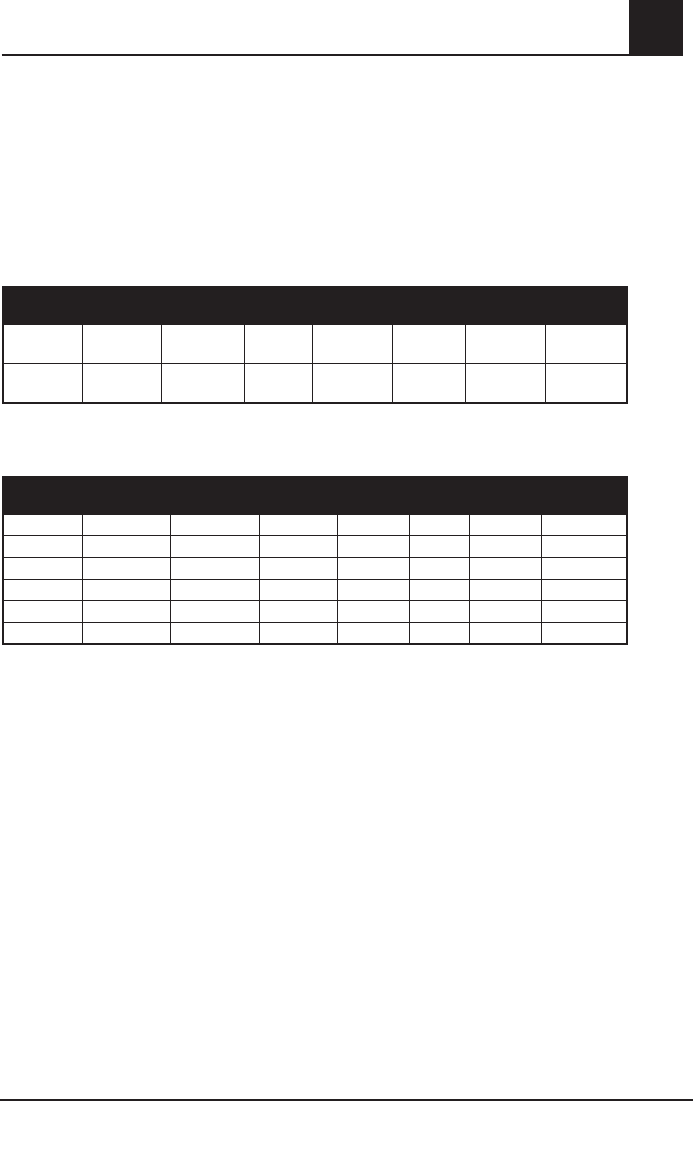
Rad-87 Pulse CO-Oximeter Operator’s Manual 8-3
8
sensors & patient cables
Masimo SpO2 Sensors
The Rad-87 may use standard Masimo LNOP, LNOPv and LNCS SpO2 sensors, when used with
Red PC, Red LNC or Rainbow RC cables respectively.
Select the appropriate patient cable to attach the LNOP or LNCS sensor to the device.
RED DIRECT CONNECT SENSORS
Masimo Red sensors can be used with the Rad-87 to enable measurement of SpO2 and pulse rate
only. Red sensors will only function with oximeter devices equipped with Masimo Rainbow SET
technology. Red Direct Connect sensors connect to the device directly.
SENSOR Weight Range Saturation Accuracy Pulse Rate Accuracy Low Perfusion Accuracy
No Motion Motion No Motion Motion Saturation Pulse Rate
DC-3
DC-12 > 30 kg ± 2% ± 3% ± 3 bpm ± 5 bpm ± 2% ± 3 bpm
DCP-3
DCP-12 10 - 50 kg ± 2% ± 3% ± 3 bpm ± 5 bpm ± 2% ± 3 bpm
LNOP® REUSABLE SENSORS
LNOP reusable sensors must be used in conjunction with Red PC cables.
SENSOR Weight Range Saturation Accuracy Pulse Rate Accuracy Low Perfusion Accuracy
No Motion Motion No Motion Motion Saturation Pulse Rate
LNOP DCI > 30 kg ± 2% ± 3% ± 3 bpm ± 5 bpm ± 2% ± 3 bpm
LNOP DCIP 10 - 50 kg ± 2% ± 3% ± 3 bpm ± 5 bpm ± 2% ± 3 bpm
LNOP YI > 1 kg ± 2% ± 3% ± 3 bpm ± 5 bpm N/A N/A
LNOP TC-I > 30 kg ± 3.5% N/A ± 3 bpm N/A ± 3.5% ± 3 bpm
LNOP DC-195 > 30 kg ± 2% ± 3% ± 3 bpm ± 5 bpm ± 2% ± 3 bpm
LNOP TF-I > 30 kg ± 2% N/A ± 3 bpm N/A ± 2% ± 3 bpm
NOTE: The LNOP TF-I and TC-I sensors were not validated under motion conditions.
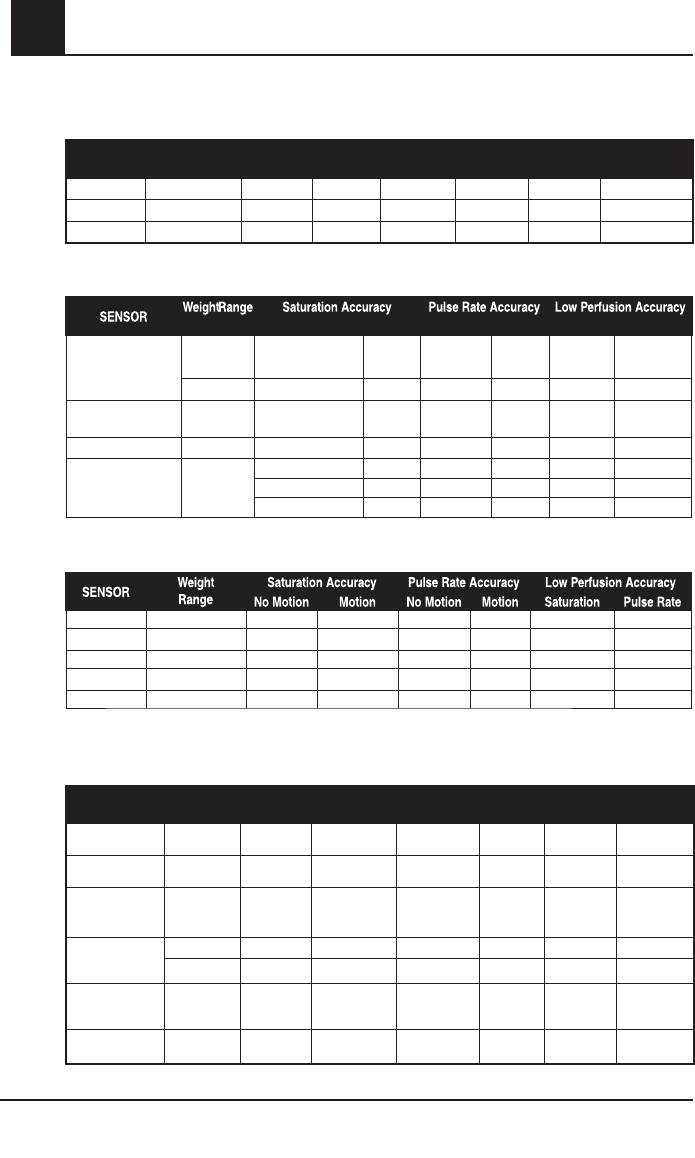
8-4 Rad-87 Pulse CO-Oximeter Operator’s Manual
8sensors & patient cables
LNOPvTM ADHESIVE SENSORS
LNOPv adhesive sensors must be used in conjunction with Red PC cables
SENSOR Weight Range Saturation Accuracy Pulse Rate Accuracy Low Perfusion Accuracy
No Motion Motion No Motion Motion Saturation Pulse Rate
LNOPv In 3 - 20 kg ± 2% ± 3% ± 3 bpm ± 5 bpm ± 2% ± 3 bpm
LNOPv Ne < 3 kg ± 3% ± 3% ± 3 bpm ± 5 bpm ± 3% ± 3 bpm
LNOPv Ad > 30 kg ± 2% ± 3% ± 3 bpm ± 5 bpm ± 2% ± 3 bpm
LNOP® SPECIALTY SENSORS
LNOP specialty sensors must be used in conjunction with Red PC cables
No Motion Motion No Motion Motion Saturation Pulse Rate
LNOP Newborn Infant
(thumb or great toe)
Infant (finger or toe)
3 - 30 kg ± 2% ± 3% ± 3 bpm ± 5 bpm ± 2% ± 3 bpm
10 - 30 kg ± 3% ± 3% ± 3 bpm ± 5 bpm ± 3% ± 3 bpm
LNOP Newborn
Neonatal < 3 kg ± 3% ± 3% ± 3 bpm ± 5 bpm ± 3% ± 3 bpm
LNOP Trauma > 30 kg ± 2% ± 3% ± 3 bpm ± 5 bpm ± 2% ± 3 bpm
LNOP Blue 2.5 - 30 kg
60 - 80% ± 4% N/A ± 3 bpm N/A ± 3% ± 3 bpm
70 - 100% ± 3.3% N/A ± 3 bpm N/A ± 3% ± 3 bpm
80 - 100% ± 3% N/A ± 3 bpm N/A ± 3% ± 3 bpm
LNCS® REUSABLE SENSORS
LNCS reusable sensors must be used in conjunction with Red LNC or Rainbow RPC cables
LNCS DCI > 30 kg ± 2% ± 3% ± 3 bpm ± 5 bpm ± 2% ± 3 bpm
LNCS DCIP 10 - 50 kg ± 2% ± 3% ± 3 bpm ± 5 bpm ± 2% ± 3 bpm
LNCS TC-I > 30 kg ± 3.5% N/A ± 3 bpm N/A ± 3.5% ± 3 bpm
LNCS TF-I > 30 kg ± 2% N/A ± 3 bpm N/A ± 2% ± 3 bpm
LNCS YI > 1 kg ± 2% ± 3% ± 3 bpm ± 5 bpm N/A N/A
NOTE: The LNCS TF-I and TC-I sensors were not validated under motion conditions.
LNCS® ADHESIVE SENSORS
LNCS sensors must be used in conjunction with Red LNC or Rainbow RPC cables
SENSOR Weight
Range
Saturation Accuracy Pulse Rate Accuracy Low Perfusion Accuracy
No Motion Motion No Motion Motion Saturation Pulse Rate
LNCS Adtx
LNCS Adtx-3 > 30 kg ± 2% ± 3% ± 3 bpm ± 5 bpm ± 2% ± 3 bpm
LNCS Pdtx
LNCS Pdtx-3 10 - 50 kg ± 2% ± 3% ± 3 bpm ± 5 bpm ± 2% ± 3 bpm
LNCS Inf-L
LNCS Inf
LNCS Inf-3
3 - 20 kg ± 2% ± 3% ± 3 bpm ± 5 bpm ± 2% ± 3 bpm
LNCS Neo-L
LNCS Neo
LNCS Neo-3
< 3 kg ± 3% ± 3% ± 3 bpm ± 5 bpm ± 3% ± 3 bpm
> 40 kg ± 2% ± 3% ± 3 bpm ± 5 bpm ± 2% ± 3 bpm
LNCS NeoPt-L
LNCS NeoPt-L
LNCS NeoPt-3
< 1 kg ± 3% ± 3% ± 3 bpm ± 5 bpm ± 3% ± 3 bpm
LNCS NeoPt-500 < 1 kg ± 3% ± 3% ± 3 bpm ± 5 bpm ± 3% ± 3 bpm
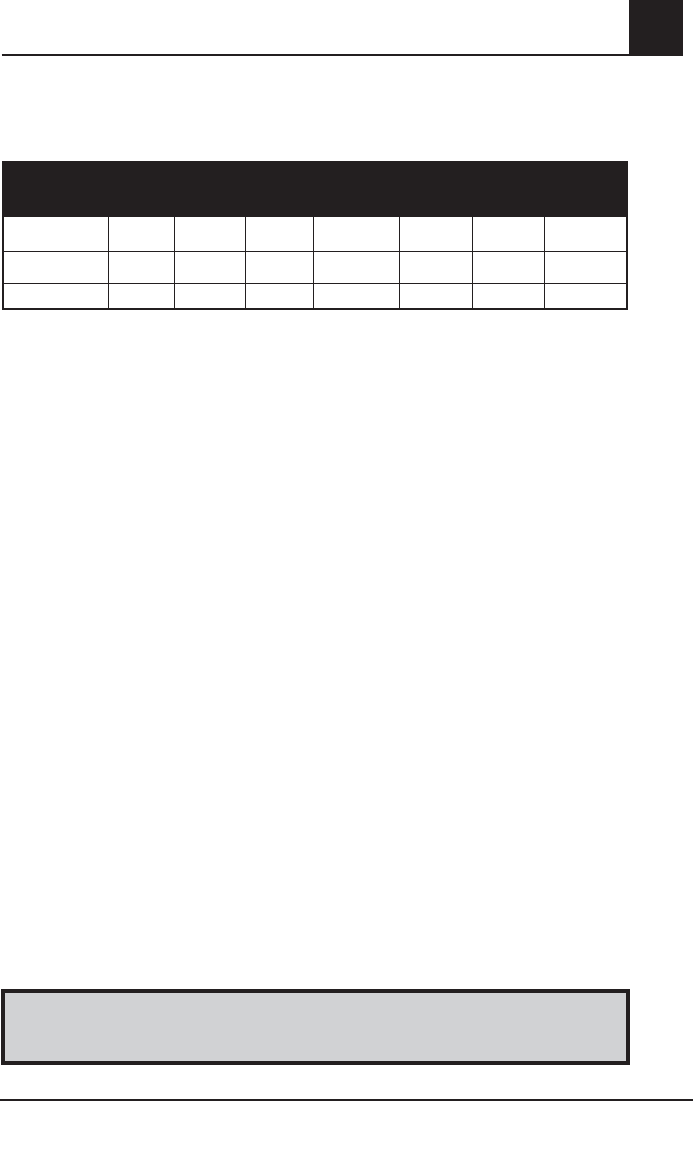
Rad-87 Pulse CO-Oximeter Operator’s Manual 8-5
8
sensors & patient cables
LNCS® SPECIALTY SENSORS
LNCS specialty sensors must be used in conjunction with Red LNC cables or Rainbow RPC
cables.
SENSOR Weight
Range
Saturation Accuracy Pulse Rate Accuracy Low Perfusion Accuracy
No Motion Motion No Motion Motion Saturation Pulse Rate
LNCS Newborn
Infant/Pediatric < 3 kg ± 2% ± 3% ± 3 bpm ± 5 bpm ± 2% ± 3 bpm
LNCS Newborn
Neonatal < 3 kg ± 3% ± 3% ± 3 bpm ± 5 bpm ± 3% ± 3 bpm
LNCS Trauma > 30 kg ± 2% ± 3% ± 3 bpm ± 5 bpm ± 2% ± 3 bpm
SENSOR ACCURACY
Refer to Section 7, Specifications for SpO2, SpMet, SpCO, SpHb and pulse rate accuracy, unless
otherwise specified in the previous tables:
Complete accuracy specifications are located in the sensor Directions For Use (DFU) and are
specific for the type of Masimo sensor used.
CLEANING AND REUSE OF MASIMO REUSABLE SENSORS AND CABLES
Reusable sensors and patient cables can be cleaned per the following procedure:
1. Remove the sensor from the patient.
2. Disconnect the sensor from the patient cable.
3. Disconnect the patient cable from the monitor.
4. Wipe the entire sensor and/or patient cable clean with a 70% isopropyl alcohol pad.
5. Allow to air dry thoroughly before returning it to operation.
CAUTION: CAREFULLY ROUTE PATIENT CABLES TO REDUCE THE POSSIBILITY OF
PATIENT ENTANGLEMENT OR STRANGULATION.
REATTACHMENT OF SINGLE USE ADHESIVE SENSORS
■ Single use sensors may be reapplied to the same patient if the emitter and detector windows
are clear and the adhesive still adheres to the skin.
NOTE: If the sensor fails to track the pulse consistently, the sensors may be incorrectly positioned.
Reposition the sensor or choose a different monitoring site.
CAUTION: DO NOT ATTEMPT TO REPROCESS, RECONDITION OR RECYCLE ANY MASIMO
SENSORS OR PATIENT CABLES AS THESE PROCESSES MAY DAMAGE THE
ELECTRICAL COMPONENTS, POTENTIALLY LEADING TO PATIENT HARM.
CAUTION: TO PREVENT DAMAGE, DO NOT SOAK OR IMMERSE THE SENSOR IN ANY
LIQUID SOLUTION. DO NOT ATTEMPT TO STERILIZE BY IRRADIATION,
STEAM, AUTOCLAVE OR ANY METHOD OTHER THAN ETHYLENE OXIDE AS
INDICATED.
WARNING: TO AVOID CROSS CONTAMINATION ONLY USE MASIMO SINGLE USE
SENSORS ON THE SAME PATIENT.


Rad-87 Pulse CO-Oximeter Operator’s Manual 9-1
9
service / maintenance
Introduction
This chapter covers how to test the operation, properly clean and how to obtain service for the
Rad-87 Pulse CO-Oximeter.
Under normal operation, no internal adjustment or recalibration is required. Safety tests and internal
adjustments should be done by qualified personnel only. Safety checks should be performed at
regular intervals or in accordance with local and governmental regulations.
WARNING: ELECTRICAL SHOCK AND FLAMMABILITY HAZARD - BEFORE CLEANING
THE RAD-87, ALWAYS TURN IT OFF AND DISCONNECT THE POWER
CORD FROM THE AC POWER SUPPLY.
The Rad-87 Pulse CO-Oximeter is a reusable device. The device is supplied and used non-
sterile.
Cleaning
The outer surface of the Rad-87 Pulse CO-Oximeter can be cleaned with a soft cloth dampened
with a mild detergent and warm water solution. Do not allow liquids to enter the interior of the
instrument. The outer surface of the instrument can also be wiped down using the following solvents:
Cidex Plus (3.4% Glutaraldehyde), 10% Bleach, and 70% Isopropyl Alcohol.
CAUTIONS:
■ DO NOT AUTOCLAVE, PRESSURE STERILIZE, OR GAS STERILIZE THE
RAD-87.
■ DO NOT SOAK OR IMMERSE THE MONITOR IN ANY LIQUID.
■ USE THE CLEANING SOLUTION SPARINGLY. EXCESSIVE SOLUTION CAN FLOW INTO
THE MONITOR AND CAUSE DAMAGE TO INTERNAL COMPONENTS.
■ DO NOT TOUCH, PRESS, OR RUB THE DISPLAY PANELS WITH ABRASIVE CLEANING
COMPOUNDS, INSTRUMENTS, BRUSHES, ROUGH-SURFACE MATERIALS, OR BRING
THEM INTO CONTACT WITH ANYTHING THAT COULD SCRATCH THE PANEL.
■ DO NOT USE PETROLEUM-BASED OR ACETONE SOLUTIONS, OR OTHER HARSH
SOLVENTS, TO CLEAN THE OXIMETER. THESE SUBSTANCES AFFECT THE DEVICE’S
MATERIALS AND DEVICE FAILURE CAN RESULT.
Refer to Section 8, Cleaning and Reuse of Masimo Reusable Sensors and Cables for cleaning
instructions of the sensor.
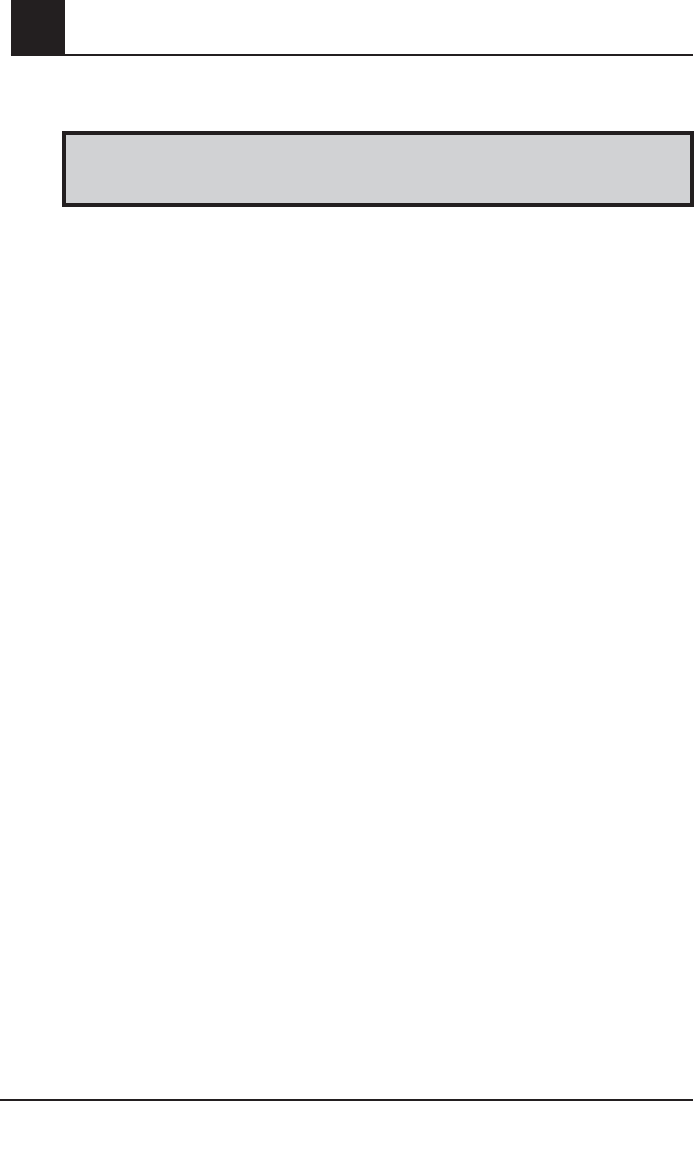
9-2 Rad-87 Pulse CO-Oximeter Operator’s Manual
9
Battery Service
WARNING: THE BATTERY SHOULD BE INSTALLED AND/ OR REMOVED FROM THE
RAD-87 BY QUALIFIED PERSONNEL ONLY.
Performance verification
To test the performance of the Rad-87 after repairs or during routine maintenance, follow the
procedure outlined in this section. If the Rad-87 fails any of the described tests, discontinue its use
and correct the problem before returning the device back to the user.
Before performing the following tests verify that the device is connected to AC power. Also
disconnect any patient cables or probes or serial cables from the instrument.
POWER-ON SELF-TEST:
1. Turn the monitor on by depressing the Power. For about 2 seconds all available LEDs are
illuminated and a brief beep tone sounds.
2. The Rad-87 begins normal operation.
KEY PRESS BUTTON TEST:
1. With the exception of the Power, press each button and verify that the device acknowledges
each key-press with an audible beep tone or by indicating a change on the display.
ALARM LIMIT TEST:
1. With the monitor turned on, depress the alarm limits button and enter the alarm menu.
Change the High Saturation Alarm parameter to a value below the currently selected value,
and accept the change.
2. Verify that the newly set parameter is shown on the Saturation Alarm Limit Display.
3. Return the High Saturation Alarm parameter to its original setting.
4. Repeat steps 1 to 3 for the following alarm parameters:
■ Low SpO2
■ Low and High pulse rate
■ High SpMet (optional feature)
■ High SpCO (optional feature)
■ Low and High SpHb
5. Reset the alarm limits again to the original settings.
service / maintenance

Rad-87 Pulse CO-Oximeter Operator’s Manual 9-3
9
LED BRIGHTNESS:
1. With the monitor turned on, press the Brightness Button once to enter the LED Brightness
menu. The display will show the default setting Level 2.
2. Continue pressing the Brightness Button to scroll through the settings.
3. Press the Enter Button to accept the desired setting and exit to the home display screen.
TESTING THE RAD-87 WITH MASIMO SET TESTER (OPTIONAL):
1. Turn the Rad-87 off and then on again.
2. Connect the Masimo SET Tester to the Pulse CO-Oximeter Patient Cable Connector.
3. Verify that within 20 seconds all available pulse bars display.
4. Verify that the SpO2 measurement is between 79% and 84%.
5. Verify that the pulse rate measurement is between 55 bpm and 65 bpm.
6. Set the SpO2 low alarm limit to 90 (see Section 4, Setup Menu Level 1, Parameter/
Measurement Alarm Limits - Screen 1, and Setup Menu Level 2, Alarm Volume).
7. Verify that an audible alarm activates, the SpO2 measurement and the SpO2 parameter label are
flashing, and the Alarm Bell and the System Status Light are flashing red.
8. Press the Alarm Silence Button once and verify that the alarm is silenced and the Alarm Bell
is flashing red and the System Status Light is flashing red.
9. Wait 120 seconds and verify that the alarm silence times out, the audible alarm is activated
again and the Alarm Bell and System Status Light are flashing red.
10. Press the up arrow button several times and verify that the loudness of the pulse beep tone
increases.
11. Press the down arrow button and verify that the loudness of the pulse beep tone decreases
until the pulse beep tone is turned off.
12. Reset the device to original settings and remove the tester to complete the procedure.
service / maintenance
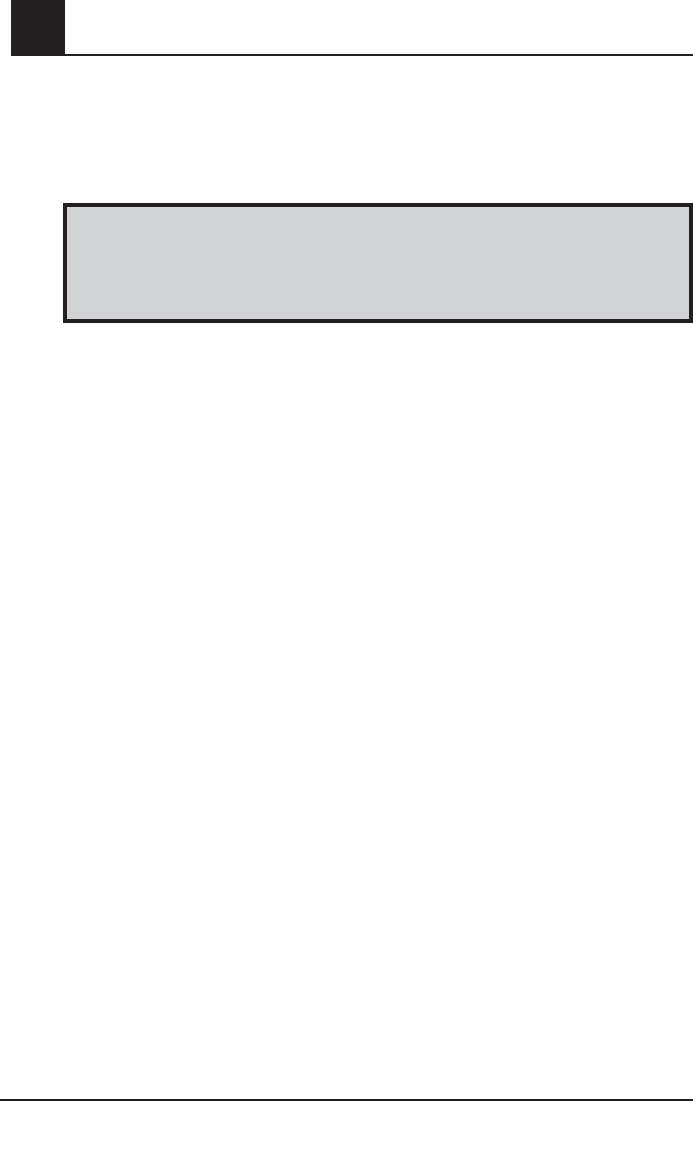
9-4 Rad-87 Pulse CO-Oximeter Operator’s Manual
9
Service and repair
REPAIR POLICY
Masimo or an authorized Service Department must perform warranty repair and service. Do not use
malfunctioning equipment. Have the device repaired.
WARNING: AN OPERATOR MAY ONLY PERFORM MAINTENANCE PROCEDURES
SPECIFICALLY DESCRIBED IN THIS MANUAL. REFER SERVICING TO
QUALIFIED SERVICE PERSONNEL TRAINED IN THE REPAIR OF THIS
EQUIPMENT.
Please clean contaminated and/or dirty equipment before returning, following the cleaning procedure
described in Section 9, Cleaning. Make sure the equipment is fully dry before packing.
To return the Rad-87 Pulse CO-Oximeter for service, please follow the Return Procedure.
RETURN PROCEDURE
Please clean contaminated/dirty equipment before returning and make sure it is fully dry before
packing the equipment. Call Masimo at 800-326-4890 and ask for Technical Support. Ask for an
RMA number. Package the equipment securely – in the original shipping container if possible – and
enclose or include the following information and items:
■ A letter describing in detail any difficulties experienced with the Rad-87. Please include the
RMA number in the letter.
■ Warranty information – a copy of the invoice or other applicable documentation must be
included.
■ Purchase order number to cover repair if the device is not under warranty, or for tracking
purposes if it is.
■ Ship-to and bill-to information.
■ Person (name, telephone/Telex/fax number, and country) to contact for any questions about
the repairs.
■ A certificate stating the Rad-87 has been decontaminated for bloodborne pathogens.
Return the Rad-87 to the following shipping address:
For USA and Asia Pacific: For Europe: All other locations:
Masimo Corporation
40 Parker
Irvine, California 92618
Tel: 949-297-7000
FAX: 949-297-7001
Masimo Europe Limited
304 RN6, Le Bois des Cotes 2
69760 Limonest
France
Tel: +33 (0) 472 17 93 70
FAX: +33 (0) 478 35 78 08
Contact your
local Masimo
Representative
service / maintenance

Rad-87 Pulse CO-Oximeter Operator’s Manual 9-5
9
Sales & End-User License Agreement
THIS DOCUMENT IS A LEGAL AGREEMENT BETWEEN YOU (“PURCHASER”) AND MASIMO
CORPORATION (“MASIMO”) FOR THE PURCHASE OF THIS PRODUCT (“PRODUCT”) AND
A LICENSE IN THE INCLUDED OR EMBEDDED SOFTWARE (“SOFTWARE”). EXCEPT AS
OTHERWISE EXPRESSLY AGREED IN A SEPARATE CONTRACT FOR THE ACQUISITION OF
THIS PRODUCT, THE FOLLOWING TERMS ARE THE ENTIRE AGREEMENT BETWEEN THE
PARTIES REGARDING YOUR PURCHASE OF THIS PRODUCT. IF YOU DO NOT AGREE TO THE
TERMS OF THIS AGREEMENT, PROMPTLY RETURN THE ENTIRE PRODUCT, INCLUDING ALL
ACCESSORIES, IN THEIR ORIGINAL PACKAGES, WITH YOUR SALES RECEIPT TO MASIMO
FOR A FULL REFUND.
Warranty
Masimo warrants to the initial Purchaser for a period of one (1) year from the date of purchase that:
(i) each new Product and the Software media as delivered are free from defects in workmanship or
materials, and (ii) the Product and Software will perform substantially as labeled in the directions
for use. Masimo’s sole obligation under this warranty is to repair or replace any Product or Software
that is covered under warranty.
Batteries are warranted for six (6) months.
To request a replacement under warranty, Purchaser must contact Masimo for a returned goods
authorization. If Masimo determines that a Product must be replaced under warranty, it will be
replaced and the cost of shipment covered. All other shipping costs shall be the responsibility of
Purchaser.
Exclusions
The warranty does not extend to, and Masimo is not responsible for, repair, replacement, or
maintenance needed because of: a) modification of the Product or Software without Masimo’s written
authorization; b) supplies, devices or electrical work external to the Product or not manufactured by
Masimo; c) disassembly or reassembly of the Product by anyone other than an authorized Masimo
agent; d) use of the Product with sensors or other accessories other than those manufactured and
distributed by Masimo; e) use of the Product and Software in ways or in environments for which they
are not labeled; and f) neglect, misuse, improper operation, accident, fire, water, vandalism, weather,
war, or any act of God. This warranty does not extend to any Product that has been reprocessed,
reconditioned or recycled.
This warranty also does not apply to any Products provided to Purchaser for testing or demonstration
purposes, any temporary Products modules or any Products for which Seller does not otherwise
receive a usage or purchase fee; all such Products are provided AS-IS without warranty.
service / maintenance

9-6 Rad-87 Pulse CO-Oximeter Operator’s Manual
9
Exclusions continued
THIS WARRANTY, TOGETHER WITH ANY OTHER EXPRESS WRITTEN WARRANTY THAT
MAY BE ISSUED BY MASIMO IS THE SOLE AND EXCLUSIVE WARRANTY AS TO THE
PRODUCT AND SOFTWARE. THIS WARRANTY IS EXPRESSLY IN LIEU OF ANY ORAL OR
IMPLIED WARRANTIES, INCLUDING WITHOUT LIMITATION ANY IMPLIED WARRANTY OF
MERCHANTABILITY OR FITNESS FOR A PARTICULAR PURPOSE. MASIMO SHALL NOT
BE LIABLE FOR ANY INCIDENTAL, SPECIAL OR CONSEQUENTIAL LOSS, DAMAGE OR
EXPENSE DIRECTLY OR INDIRECTLY ARISING FROM THE USE OR LOSS OF USE OF ANY
PRODUCTS OR SOFTWARE. IN NO EVENT SHALL MASIMO’S LIABILITY ARISING FROM ANY
PRODUCT AND SOFTWARE (UNDER CONTRACT, WARRANTY, TORT, STRICT LIABILITY OR
OTHER CLAIM) EXCEED THE AMOUNT PAID BY PURCHASER FOR THE PRODUCTS GIVING
RISE TO SUCH CLAIM. THE LIMITATIONS IN THIS SECTION SHALL NOT BE DEEMED TO
PRECLUDE ANY LIABILITY THAT CANNOT LEGALLY BE DISCLAIMED BY CONTRACT.
End-User License
1. Grant of License: In consideration of payment of the Software license fee, which is part of
the price paid for the Product, Masimo grants to Purchaser a nonexclusive, nontransferable
(except as set forth below) license (“License”), without right to sublicense, to use the copy
of the Software in connection with Purchaser’s use of the Product for its labeled purpose
as set forth in these directions for use. Masimo reserves all rights not expressly granted to
Purchaser.
2. Ownership of Software: The Software is licensed not sold; all rights and interests in the
Software and all copies thereof remain at all times vested in Masimo, and do not pass to
Purchaser. Any references in this Agreement to the purchase or sale of the Software shall be
deemed the purchase or sale of a Software License as set forth herein.
service / maintenance

Rad-87 Pulse CO-Oximeter Operator’s Manual 9-7
9
Restrictions
1. Copyright Restrictions: The Software and the accompanying written materials are copyrighted.
Unauthorized copying of the Software, including Software that has been modified, merged,
or included with other software, or the written materials is expressly forbidden. Purchaser
may be held legally responsible for any copyright infringement that is caused or incurred by
Purchaser’s failure to abide by the terms of this Agreement. Nothing in this License provides
any rights beyond those provided by 17 U.S.C. §117.
2. Use Restrictions: Purchaser may physically transfer the Product from one location to another
provided that the Software is not copied. Purchaser may not electronically transfer the Software
from the Product to any other device. Purchaser may not disclose, publish, translate, release,
distribute copies of, modify, adapt, translate, reverse engineer, decompile, disassemble, or
create derivative works based on the Software or the written materials.
3. Transfer Restrictions: In no event may Purchaser transfer, assign, rent, lease, sell, or otherwise
dispose of the Product or the Software on a temporary basis. Purchaser shall not assign or
transfer this License, in whole or in part, by operation of law or otherwise without Masimo's
prior written consent; except that the Software and all of Purchaser’s rights hereunder shall
transfer automatically to any party that legally acquires title to the Product with which this
Software is included. Any attempt to assign any rights, duties or obligations arising hereunder
other than as set forth in this paragraph shall be void.
4. U.S. Government Rights: If Purchaser is acquiring Software (including the related
documentation) on behalf of any part of the United States Government, the following
provisions apply: the Software and documentation are deemed to be “commercial software”
and “commercial computer software documentation,” respectively pursuant to DFAR
Section 227.7202 FAR 12.212, as applicable. Any use, modification, reproduction, release,
performance, display or disclosure of the Software (including the related documentation) by
the U.S. Government or any of its agencies shall be governed solely by the terms of this
Agreement and shall be prohibited except to the extent expressly permitted by the terms of
this Agreement.
service / maintenance

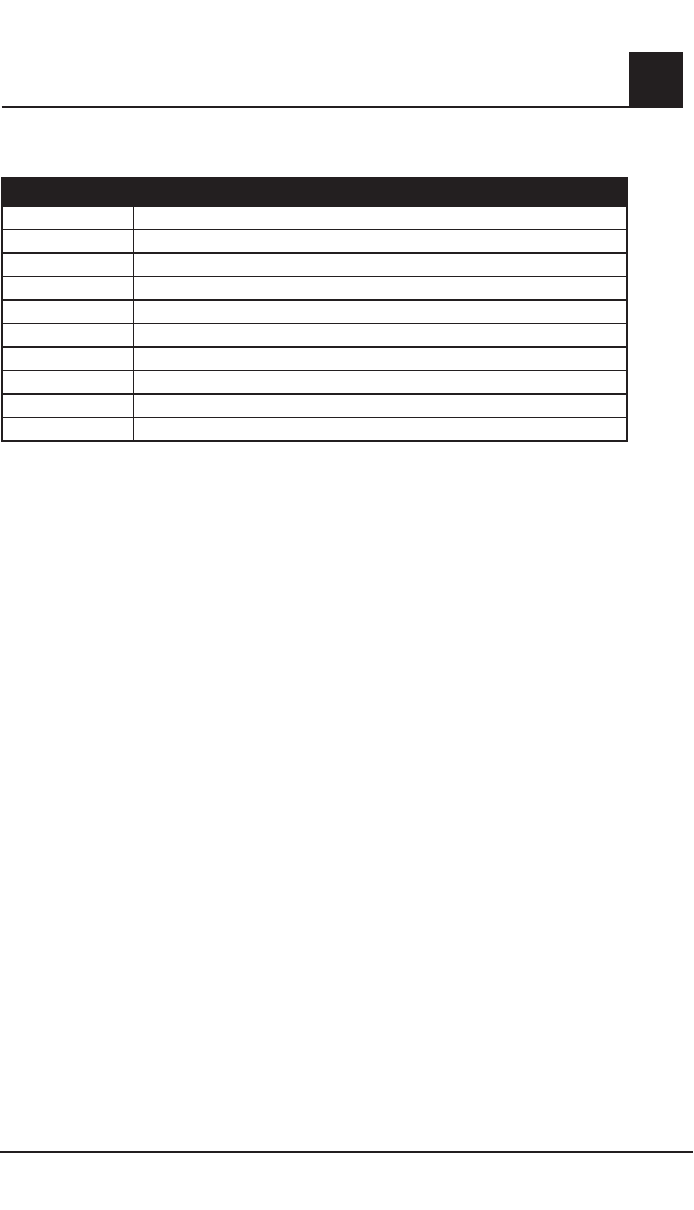
Rad-87 Pulse CO-Oximeter Operator’s Manual 10-1
10
part numbers
Part Numbers
PART NUMBER DESCRIPTION
32750 Rad-87 Operator's Manual (SpHb), French
32751 Rad-87 Operator's Manual (SpHb), German
32752 Rad-87 Operator's Manual (SpHb), Italian
32753 Rad-87 Operator's Manual (SpHb), Spanish
32754 Rad-87 Operator's Manual (SpHb), Japanese
32755 Rad-87 Operator's Manual (SpHb), Dutch
32756 Rad-87 Operator's Manual (SpHb), Portuguese
32757 Rad-87 Operator's Manual (SpHb), Danish
32758 Rad-87 Operator's Manual (SpHb), Swedish
32759 Rad-87 Operator's Manual (SpHb), Chinese
Please visit our website, www.masimo.com, for updated information about Masimo products.
Section
10
Part
Numbers
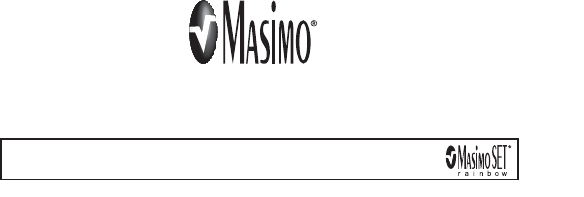
31374/4525E-0608
www.masimo.com
Instruments and sensors containing Masimo Rainbow SET technology are
identified with the Masimo Rainbow SET logo.